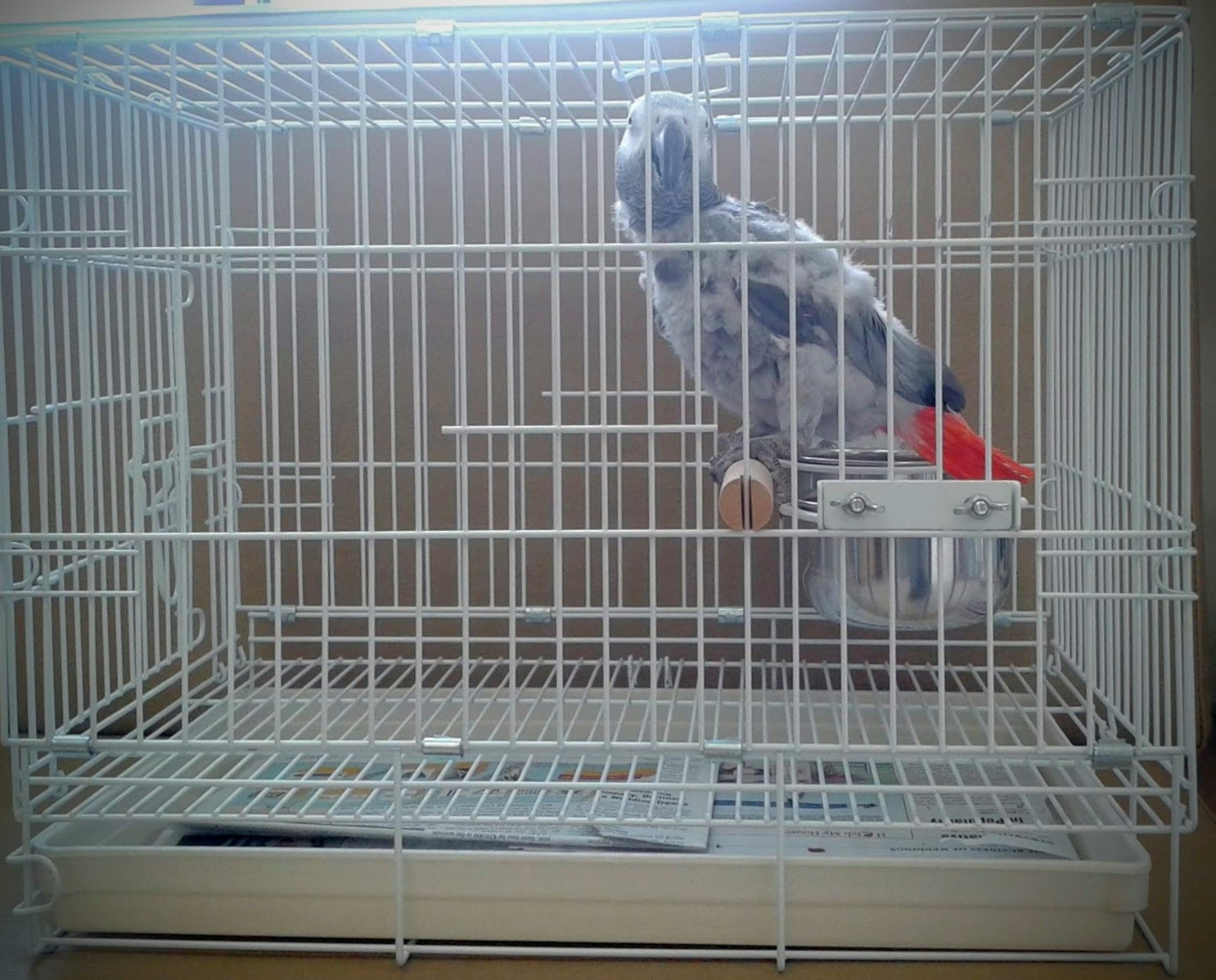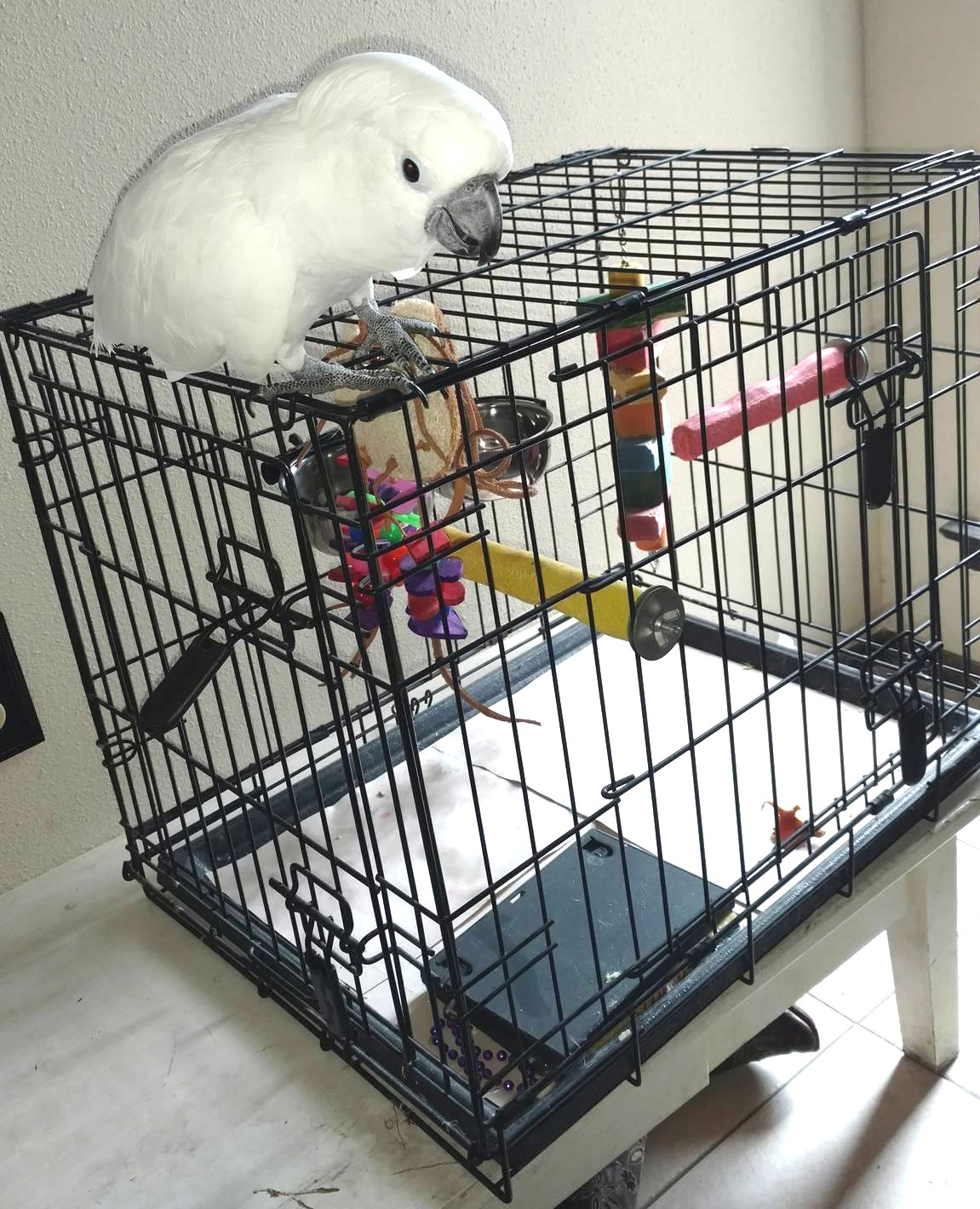Now that you’ve prepped the birds for the big move – the time will eventually come to get them moving! Whether you’re hopping just a town or two over, or across the country, transporting your parrots is usually a stressful experience. Although Symon and Murphy are a big fan of car rides, they aren’t fans of being packed into the car like luggage, along with the rabbits, hamsters, and furniture. We did a big move in September 2015 and now we’re gearing up for a big move again in just 2 weeks – so this post is coming from a very real experience.

Because birds are resistant to change, I usually move them last. While in my previous post I recommended that especially phobic birds take a trip to the pet sitter’s house for moving day, that isn’t always a possibility. For my previous move, we already LIVED at Grandma’s house – so the birds couldn’t spend the night in her den! So, they were present every step of the packing and moving experience. They did, however, get to stay in their happy places until the last possible moment.
My personal recommendation is to put your parrot in a familiar travel cage with food, water, and toys while you transport their regular cage to the new house; this will give you a chance to assemble their cage and belongings in the new space before they arrive. If you have a small bird living in a plastic-bottomed and wire cage, however, it may be fine to just transport them in that, and set up the stand or place it on a table when you arrive. Either way, your bird is likely to be a little shaken up from the car ride, so make sure that newspaper or other substrate is already placed in the cage, along with toys, familiar food, and clean water. Your parrot will appreciate being able to step inside their old home, inside their new home, and have a little bit of normalcy in a hectic time!

Speaking of the car ride – let’s review. While dogs may just lie down in the backseat, and a cat may yowl the entire time from his carrier, birds tend to take car rides in many different ways. Some love to sing along to the radio and really ham it up while others are bound to be very frightened, and cower at the bottom of the cage. Regardless of which type of bird you have, you’ll want to make sure the traveler is secured with a seatbelt or other restraint, so the cage doesn’t become a projectile in an accident. While safety should ALWAYS be a priority when you’re on the road, take extra caution around turns and avoid slamming on your breaks at traffic lights. You may be in a rush to get moving over with, but with pets (or kids!) in the car, you’re better off just taking it slow and keeping a level-head. Your feathered friends will be glad you did.
If your move is more than an hour drive from your current residence, you’ll want to factor in time to dispense fresh water and treats to your pets. While a human may be able to make a long trip all at once, our feathered and furry friends are more prone to travel anxiety which not only causes mental stress, but physical and respiratory stress, as well. This means that after so long of panting or fretting, it may be difficult for them to catch their breath and feel at ease. By stopping for a 15 minute break, you give your pets a chance to recharge with a treat and get a fresh drink of water, before heading back out on the road. Be mindful of your pets at all times while in the car.
What’s your least favorite part about moving? Let us know in the comments below – and how you manage to push through it. Check us out on Facebook for more posts and updates!
2,954 total views, 2 views today
